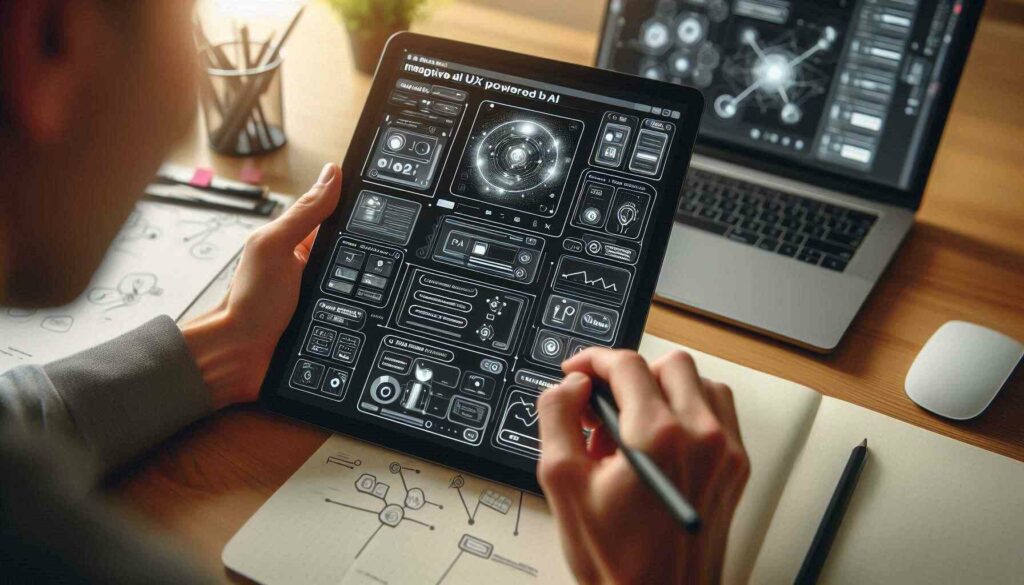
AI CERTS
4 months ago
Learn AI UX Design Techniques: The User Experiences with AI
In today’s tech-driven world, artificial intelligence (AI) is revolutionizing industries, and nowhere is this impact more apparent than in user experience (UX) design. The ability to learn AI UX design techniques is not just a skill—it’s a gateway to creating smarter, more intuitive, and highly personalized digital experiences.

From predictive analytics to adaptive interfaces, mastering AI in UX is essential for designers looking to future-proof their careers. This comprehensive guide will help you explore what it takes to learn AI UX design techniques, why they matter, and how they can redefine the way users interact with technology.
Why You Should Learn AI UX Design Techniques
Before diving into the details, let’s address the core question: Why should you learn AI UX design techniques?
- Relevance in a Changing World
Industries like e-commerce, healthcare, and education are increasingly relying on AI-driven solutions. Designers with expertise in AI UX design techniques can create systems that stand out in crowded markets. - Smarter User Interactions
The ability to leverage AI allows designers to predict user behavior and adapt interfaces in real-time. Whether it’s a recommendation engine or a conversational interface, AI makes interactions seamless. - Career Opportunities
Professionals who learn AI UX design techniques gain a significant edge in the job market, as companies prioritize innovative, AI-powered solutions.
What Are AI UX Design Techniques?
When you AI UX design techniques, you’re diving into methods that combine AI’s computational power with human-centered design. These techniques use machine learning, data analytics, and natural language processing (NLP) to create dynamic, user-friendly systems.
For instance, think of Netflix recommending your next binge-worthy series or Spotify curating playlists just for you. Both rely on AI-powered design principles that enhance the user experience.
Key Benefits of Learning AI UX Design Techniques
1. Hyper-Personalization
AI allows designers to tailor interfaces to individual preferences. For example, e-commerce platforms can display products based on a user’s browsing history.
2. Efficiency and Automation
By integrating AI, repetitive design tasks can be automated, freeing up designers to focus on creativity and strategy.
3. Improved Accessibility
AI-driven systems can adapt to users with disabilities, offering voice commands or visual recognition to ensure inclusivity.
Mastering these benefits is just one reason why professionals across industries are rushing to learn AI UX design techniques.
Top Techniques to Master When You Learn AI UX Design Techniques

1. Anticipatory Design
This technique uses AI to predict user needs, reducing the number of steps required to complete a task. For example, AI can suggest frequently used tools in design software based on past behavior.
2. Conversational UX
Integrate chatbots and virtual assistants that use NLP to deliver human-like interactions. This approach ensures users feel understood, even when talking to machines.
3. Dynamic Content Generation
AI can help create adaptable interfaces that change based on user interactions, such as dashboards that prioritize frequently used features.
4. Visual Recognition Integration
Systems like Google Photos use AI to sort and tag images automatically, enhancing user convenience.
By incorporating these strategies, you’ll truly understand what it means to AI UX design techniques and apply them effectively.
Tools to Help You Learn AI UX Design Techniques
To master these techniques, you need the right tools. Here are a few must-haves:
- Adobe XD: For AI-powered prototyping and collaboration.
- Sketch with Plugins: Integrate AI tools to optimize workflows.
- Figma AI Add-Ons: Enable smarter design iterations.
- IBM Watson Design Tools: Specialized tools for AI-driven UX projects.
Leveraging these tools will accelerate your ability to learn AI UX design techniques and bring your ideas to life.
Certifications to Kickstart Your Journey

If you’re serious about mastering these skills, consider earning a certification. Here are some top programs to help you learn AI UX design techniques:
- AI+ UX Design Certification by AI CERTs
- Covers everything from AI fundamentals to advanced UX techniques.
- Learn more
- Google UX Design Certificate
- Explores AI’s role in creating user-friendly designs.
- Learn more
- Human-Centered AI Design (Stanford Online)
- Focuses on ethical AI integration in UX.
- Learn more
Each certification adds credibility to your expertise, proving you’re ready to create AI-powered experiences.
Real-World Applications of AI UX Design Techniques
E-Commerce
Retailers like Amazon use AI to create intuitive shopping experiences, from personalized recommendations to predictive search features.
Healthcare
AI-powered patient portals simplify scheduling, while wearable devices track health metrics in real-time, enhancing user engagement.
Education
Platforms like Duolingo use AI to adapt lessons to individual learning speeds, making education more accessible and effective.
These examples demonstrate how critical it is to learn AI UX design techniques for anyone aiming to make a lasting impact in their field.
Challenges to Overcome
No innovation comes without hurdles. When you AI UX design techniques, you must address:
- Data Privacy Concerns
Users are increasingly worried about how their data is used. Transparent AI systems are crucial. - Algorithmic Bias
Designers must ensure AI models don’t perpetuate stereotypes or biases. - Complexity Management
Striking a balance between powerful AI features and user-friendly design is essential.
These challenges underline the importance of ethical practices when applying what you’ve learned.
The Future of AI UX
What’s next for those who learn AI UX design?
- Emotionally Intelligent Systems: AI that detects and responds to human emotions will redefine UX.
- Augmented Reality (AR): Combining AR with AI to create immersive, interactive experiences.
- Hyper-Personalization at Scale: AI systems will deliver unparalleled customization without overwhelming users.
Staying ahead in this rapidly evolving field requires continuous learning and adaptation.
Final Thoughts
To learn AI UX design techniques is to embrace the future of design. Whether you’re crafting adaptive interfaces, creating conversational AI systems, or revolutionizing accessibility, these techniques are the cornerstone of modern UX design.
Ready to become a leader in this transformative field? Start your journey today and unlock the potential of AI-driven user experiences.
"Ready to elevate your AI expertise? Contact AI CERTs today and let’s shape the future of innovation together!"
Here are our other articles you might be interested :